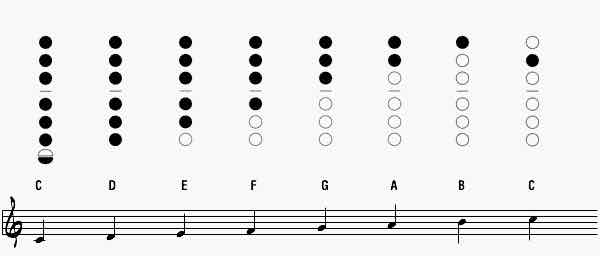- fingering exercises without blowing
- rhythmic exercises
You can practice saxophone fingering technique without even blowing air into your saxophone. This is a good way to just work out the rust in your fingers and develop smooth fingering for the scale patterns.
Even though the end result has to be total co-ordination between your hands, brain and embouchure this fingering only exercise will let you focus entirely on developing the rhythm in your fingers and ultimately will help with the big picture.
I got the idea of practicing without blowing into the horn from a biography I read on John Coltrane, one of the greatest saxophonists that ever lived. The guy who wrote the bio was taking a few lessons from him once in a while and so one day he showed up while Coltrane was on the road. He was invited to the hotel at 9 am to have a practice session.
When he walked in the guy asked Coltrane if it wasn’t a bit too early to make noise in the hotel? Coltrane answered that he’d already been practicing for an hour… and so he showed the guy what he had been doing… just fingering, no blowing, a bunch of different exercises he had been working on.
Well, Coltrane was addicted to practicing on his sax. But I saw a value in this lesson because when you practice that way, you don’t have to think about all the things that happen while you’re blowing, just work out the knots in the fingers! Of course you have two put them both together eventually but it really helps doing it this way for a while.
While you’re learning the notes on the sax you might as well learn How To Read Them!
You can refer to the note fingerings and music notation as you learn each note in the video lesson.

The C Major Scale

What you see here is the musical notes for the C major scale. They are written on music lines which are called the staff.
Starting at the left, there is the musical sign you might recognize. It looks like a fancy “S” with a line through it. It’s called the treble clef. There are several other types of clef’s used for different instruments but us sax players read only in treble clef.
After the treble clef there are the 4’s on top of each other… that means the time signature for this piece of music in in 4/4: that’s 4 quarter beats in each bar. Count 1 2 3 4 and that’s one complete bar.
Notice the second C scale on the right side that has the black notes closer together… these are quarter notes and you play one on each beat as you count: 1 2 3 4.
The first scale that doesn’t have the notes filled in consists of the exact same notes but because they are hallow and not filled in they are called half notes. This means each note is worth half of the bar, so they last for 2 beats, while the black quarter notes only last one beat.. very easy math eh?
Let’s Recap All These Musical Terms We Just Covered:
- Staff
- Treble Clef
- Time Signature
- 4/4
- Quarter Beats
- Quarter Notes
- Bar
- Half Notes
WOW! That’s a lot to learn in one session but if you learn these terms you’ll be well on your way.

